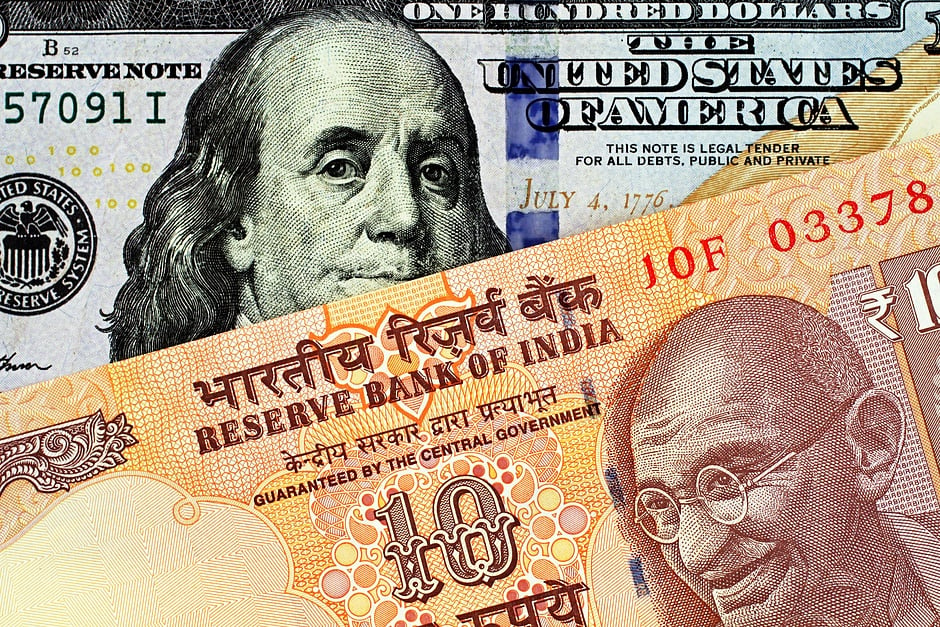USD/INR settles higher near 83.70 amid firm US Dollar
- USD/INR concludes the week on a promising note as US Dollar extends its upside.
- The expectations for Donald Trump winning US presidential elections have increased.
- Union Budget on July 23 will be the next trigger for the Indian Rupee.

The USD/INR pair closes the week on a positive note near 83.70 on Friday. The asset strengthens as the US Dollar (USD) extends its recovery. The US Dollar Index (DXY), which tracks the Greenback’s value against six major currencies, recovers further to near 104.40.
The US Dollar rises as its safe-haven appeal improves amid growing speculation that Republicans will defeat Democratics in United States (US) presidential elections, scheduled for later this year. The expectations for Donald Trump winning elections rose after an assassination attack on him. Also, discussions that US President Joe Biden could drop his re-election bid due to medical conditions has prompted expectations of Trump coming out victorious.
Donald Trump is known for advocating protectionist trade policies, which results in lower imports and is a favorable situation for the US Dollar.
Also, US bond yields have risen despite investors see prospects of the Federal Reserve (Fed) to begin reducing interest rates from September as certain. 10-year US Treasury yields jump to near 4.24%.
The expectations for the Fed to pivoting to policy normalization rose due to easing price pressures and cooling labor market strength.
Meanwhile, the Indian Rupee depreciates amid weakness in Indian equity markets as profit-booking kicks in. The next trigger for the Indian Rupee will be Fiscal budget announcement, which is scheduled for July 23. Prime Minister Narendra Modi-led-NDA is expected to cut fiscal deficit target, which would be favorable for the Indian Rupee.
Indian Rupee FAQs
The Indian Rupee (INR) is one of the most sensitive currencies to external factors. The price of Crude Oil (the country is highly dependent on imported Oil), the value of the US Dollar – most trade is conducted in USD – and the level of foreign investment, are all influential. Direct intervention by the Reserve Bank of India (RBI) in FX markets to keep the exchange rate stable, as well as the level of interest rates set by the RBI, are further major influencing factors on the Rupee.
The Reserve Bank of India (RBI) actively intervenes in forex markets to maintain a stable exchange rate, to help facilitate trade. In addition, the RBI tries to maintain the inflation rate at its 4% target by adjusting interest rates. Higher interest rates usually strengthen the Rupee. This is due to the role of the ‘carry trade’ in which investors borrow in countries with lower interest rates so as to place their money in countries’ offering relatively higher interest rates and profit from the difference.
Macroeconomic factors that influence the value of the Rupee include inflation, interest rates, the economic growth rate (GDP), the balance of trade, and inflows from foreign investment. A higher growth rate can lead to more overseas investment, pushing up demand for the Rupee. A less negative balance of trade will eventually lead to a stronger Rupee. Higher interest rates, especially real rates (interest rates less inflation) are also positive for the Rupee. A risk-on environment can lead to greater inflows of Foreign Direct and Indirect Investment (FDI and FII), which also benefit the Rupee.
Higher inflation, particularly, if it is comparatively higher than India’s peers, is generally negative for the currency as it reflects devaluation through oversupply. Inflation also increases the cost of exports, leading to more Rupees being sold to purchase foreign imports, which is Rupee-negative. At the same time, higher inflation usually leads to the Reserve Bank of India (RBI) raising interest rates and this can be positive for the Rupee, due to increased demand from international investors. The opposite effect is true of lower inflation.
Author

Sagar Dua
FXStreet
Sagar Dua is associated with the financial markets from his college days. Along with pursuing post-graduation in Commerce in 2014, he started his markets training with chart analysis.

















